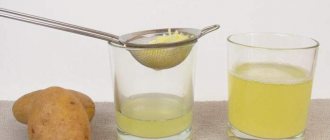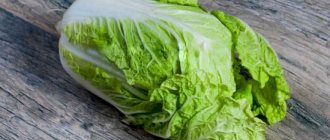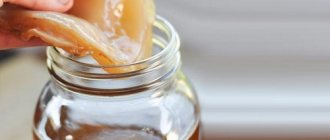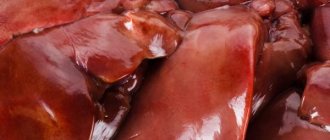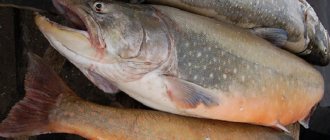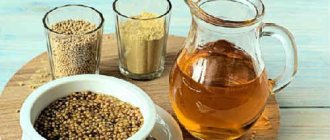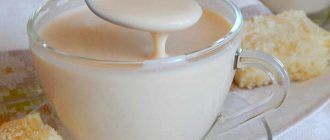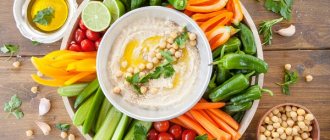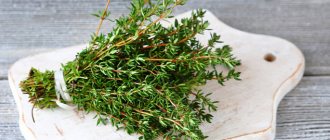Turmeric or turmeric is a spice that was originally given to us by India, or rather its southeast. Essentially, it is a herbaceous plant of the ginger family. This explains the fact that turmeric can be both an independent seasoning and part of aromatic sauces.
In order to obtain the spice turmeric, you need to specially process the tubers and roots of the turmeric plant. They have a bright orange, in some cases red color and a rich odor.
The dye curcumin is also found in turmeric roots and is used as a natural coloring agent in cooking.
Benefit
Turmeric's beneficial properties have been known to mankind for a very long time. They are still used today. In addition, modern medicine supports the use of turmeric as an aid to certain diseases.
- It is believed that turmeric is a natural antibiotic, which, unlike its synthetic counterpart, has no side effects. In addition, it has an excellent effect on the condition of the gastrointestinal tract, normalizes digestive processes, has a choleretic effect, has a detoxifying effect, and relieves inflammation. The benefits for the gastrointestinal tract are undeniable - turmeric restores intestinal microflora damaged due to antibiotics or chronic intestinal diseases.
- During the period of rehabilitation after long and serious illnesses, when the body is extremely weakened, turmeric helps restore strength. It has a warming effect and cleanses the blood of toxins.
- The skin will benefit not only from eating turmeric, but also from masks, scrubs and nourishing products containing it.
- Turmeric is able to remove heavy metals and radionuclides from the body. Powerful antioxidant effects also help slow down the aging process.
- Alzheimer's disease (senile dementia) may not worry those people who regularly consume turmeric.
- For diabetes and obesity, consuming turmeric helps not only normalize sugar levels and reduce appetite, but also stabilizes metabolic processes in the body. It is used in weight loss drinks. For diabetes, it is recommended to use turmeric with mumiyo.
- Benefits for the heart and blood vessels - removing cholesterol from the body and preventing the formation of cholesterol plaques. And this prevents heart attacks and strokes.
- Turmeric can be used as an adjuvant in the treatment of arthritis. Eat half a teaspoon daily for a long period and you will feel the results.
- Turmeric prevents the development of cancer cells. And if they are present, it slows down or stops growth altogether. The benefit of long-term use of turmeric is that it is a powerful anti-cancer agent.
- External use – paste with the addition of aloe juice. Perfectly heals wounds and burns.
- For colds and coughs - drinks with turmeric, preferably warm milk with honey. For pharyngitis and sore throat, dissolve half honey with turmeric in the mouth 3 times a day.
It must be remembered that the benefits of using turmeric as a therapeutic and prophylactic agent will be noticeable with long-term and regular use.
Beneficial features
Turmeric has many beneficial properties. This is due to its composition, rich in vitamins and microelements. The spice is known to help restore liver cells. In people suffering from diabetes, sudden jumps in sugar levels lead to disruption of the liver and glycogen synthesis is disrupted. For them, turmeric will become not just a flavoring additive, but also a kind of medicine that supports the healthy functioning of the liver.
Curcumin in the spice affects the tumor process and prevents the development of tumors. Regular consumption of turmeric will help prevent cancer.
Turmeric is used to prevent Alzheimer's disease. Substances contained in the plant help remove amyloid deposits in the brain. The spice is used to slow down the development of multiple sclerosis.
The spice is effectively used to treat skin diseases such as eczema, psoriasis, and furunculosis. Turmeric acts as an antiseptic, disinfects affected areas of the skin, relieves itching and inflammation.
In Chinese medicine, the spice is used to treat depression. The B vitamins contained in the composition normalize the functioning of the nervous system.
It is useful to use turmeric to prevent diseases of the cardiovascular system. In addition, the plant affects the growth of blood cells and promotes blood renewal, cleanses blood vessels and reduces cholesterol levels.
The range of beneficial properties of turmeric is quite wide. It is used for treatment and prevention. During the period of respiratory viral diseases, turmeric will protect the body from infections and strengthen the immune system .
- Turmeric is also useful in treating diarrhea and flatulence. It relieves bloating and relieves pain.
- Stimulates bile production and normalizes carbohydrate metabolism.
- The spice helps remove waste and toxins from the body and improves metabolism.
- It is used in dietary nutrition to combat excess weight.
- In addition, turmeric has bactericidal, healing, antifungal and anti-inflammatory effects. It can be used to treat wounds and burns.
- Turmeric is used for arthritis, as well as for bruises and sprains. It relieves pain in muscles and joints, improves blood circulation.
Benefits for women
Women will be able to appreciate the benefits of the spice not only in cooking. It is widely used for medical purposes and in cosmetology. Turmeric prevents the development of tumors and acts as a means of preventing breast cancer.
The anti-inflammatory and bacterial properties of the plant promote wound healing. For cosmetic purposes, turmeric is used to combat pigmentation, improve complexion, and strengthen hair. The spice improves skin tone and normalizes the regeneration of epithelial cells, preventing premature aging. Various masks and peelings are prepared using turmeric. Regular cosmetic use will give positive results after several procedures.
Turmeric is an effective remedy for dandruff. It normalizes the acidity of the skin, eliminates bacteria and reduces itching.
Regular use of turmeric stabilizes hormonal levels, improves the menstrual cycle, and relieves pain during uterine cramps. The spice will ease the manifestation of premenstrual syndrome and relieve irritation. The vitamin composition acts as an antidepressant and normalizes the functioning of the nervous system.
For the fair sex, consuming turmeric will bring only positive results. The plant is suitable for internal and external use, strengthens the body from the inside and transforms the appearance.
Benefits of turmeric for men
Turmeric has a number of health benefits for men. The spice affects the functioning of the hormonal system and normalizes testosterone production. Its regular use improves the quality of seminal fluid and increases sperm activity. Men are recommended to use the plant for the prevention of diseases of the genitourinary system, including prostatitis and prostate adenoma.
The spice, rich in vitamins, strengthens the immune system and protects the body from the effects of infections and viruses. Turmeric has a positive effect on the functioning of the cardiovascular system, improves the activity of the heart muscle and blood circulation. The spice is used to prevent atherosclerosis and slows down the development of cholesterol plaques.
Having an antioxidant effect, turmeric helps remove toxins from the body and regulates metabolism. It is widely used to cleanse the liver and prevent various diseases of this organ.
Turmeric has a complex effect on the condition of all organs and systems, increasing vitality. The spice should definitely be included in a healthy diet in order to regularly enrich the body with essential vitamins and microelements.
Harm
Turmeric has many beneficial properties. But nevertheless, if consumed excessively, it can cause irreparable harm to your health.
- First of all, people who suffer from gallstones or clogged bile ducts can notice the harm from turmeric.
- When treating with any medications, you must consult with your doctor so that the biological activity does not cause you harm.
- If you have chronic diseases, you also need to consult a doctor so that the harm does not outweigh the benefits.
Remember that turmeric, as a very active product, is beneficial in moderation.
The unique healing properties of turmeric
Turmeric has been extremely popular for about 5,000 years. During this time, humanity has invented a lot of options for using yellow powder, and significantly revealed the potential of its use.
Anticancer effect
From 1928 to 2020, 12,595 scientific papers on curcumin have been published. Moreover, more than a third of them were aimed at studying the effect of this substance on cancer cells.
It turned out that curcumin is able to influence an extensive list of factors that influence the development of cancer cells. These include cell growth factors, DNA replication, cytokines and apoptotic proteins that control cell death.
Such research has allowed scientists to develop many drugs that can significantly slow down or completely stop the development of cancer.
Strengthening immunity
Among the components of turmeric there are a lot of powerful antioxidant substances. These include tocopherol compounds (vitamin E), which protect cells from the penetration of foreign particles.
Vitamin K, in turn, contributes to the proper functioning of the digestive system. This prevents the accumulation of microbes and the development of malignant tumors.
Prevention and treatment of diabetes
Turmeric is effective in reducing insulin resistance when a person is pre-diabetic or has type 2 diabetes. Regular addition of yellow powder to food significantly slows down the development of diabetes.
But this technique only works if a person chooses food wisely. You need to understand that no spices or additives will help if you consume too much sweet, fatty and fried food.
- Find out more: What is soy and can it replace meat?
Therefore, for such prevention to show good results, use one of our menus for the week.
Normalization of blood pressure
Turmeric is rich in components that have a beneficial effect on blood vessels and capillaries. These elements include potassium and magnesium. They actively remove waste products from cells from the body and seal the walls of blood vessels. Magnesium also increases the production of insulin by the pancreas and helps it neutralize sugar ingested from food.
Iron paired with magnesium saturates the blood with oxygen. This improves blood circulation and delivery of nutrients to muscles and internal organs.
This joint work leads to equalization of blood pressure and the removal of low-density cholesterol (bad cholesterol) from the body.
Hemostatic effect and wound healing
Another amazing quality of turmeric root powder is that it can be used as a powder on wounds for cuts and bumps. It has excellent antiseptic and bactericidal properties. Turmeric lotion will help disinfect the cut.
Essentially, you use the seasoning you add to your dishes as a medicine. There are even keychains with turmeric and other spices that are convenient to carry with you and help yourself or another person if necessary.
Turmeric helps you lose weight
How does Chinese saffron help you lose weight? It’s very simple: the nutrients that the plant’s root is rich in take an active part in metabolism. In addition, the spice itself helps cleanse the intestines of harmful accumulations.
You can use yellow spice to lose weight in another way. To do this, just drink tea and tinctures with turmeric. Such drinks are good for reducing appetite and cravings for sweets.
Prevention and treatment of gastrointestinal diseases
“Gold powder” shows itself especially well as a preventive remedy for stomach upsets and digestive disorders. It is enough to dilute 1 tsp. powder with warm water, and get a good remedy for flatulence (gas) and diarrhea.
The fact is that turmeric provokes the production of bile, which is needed for the breakdown of fats, the absorption of beneficial elements into the intestinal walls and disinfects the mucous membrane. This is a kind of natural antibiotic.
Fighting Alzheimer's disease
The high iron content saturates brain cells with oxygen and promotes good metabolism. The minerals in turmeric support the health of blood vessels, reduce their fragility and prevent internal bleeding.
Based on turmeric root, medicines are created to treat senile dementia, dementia and multiple sclerosis. The effect of curcumin on improving memory has been repeatedly proven by scientific works of scientists.
Calorie content
The calorie or energy value of a product is based on the nutrients it consists of. These are proteins, fats and carbohydrates. It is these substances that provide one or another level of caloric content of the product.
Calorie content of turmeric:
| Name | Quantity per 100 g. | Quantity in Art. l. (25 gr.) | Quantity in tsp. (10 g) |
| Calorie content | 354 k cal | 88.5 kcal | 35.4 kcal |
| From proteins | 38 kcal | 9.5 kcal | 3.8 kcal |
| From fats | 107 kcal | 26.75 kcal | 10.7 kcal |
| From carbohydrates | 210 kcal | 52.5 kcal | 21 kcal |
Calorie content and composition of turmeric
The beneficial properties of turmeric are provided by the vitamins, macro- and microelements it contains, as well as essential oils. The saturation of useful components has a beneficial effect on health.
100 g of turmeric contains 312 kcal. The spice is not low in calories, but consuming it in small quantities does not affect weight. For overweight people, turmeric will be useful for normalizing metabolic processes and lipid balance.
Nutritional value per 100 g of product:
- proteins – 9.68 g;
- fats – 3.25 g;
- carbohydrates – 44.44 g;
- water – 12.85 g;
- dietary fiber – 22.7 g.
Contraindications
Turmeric has fairly narrow contraindications. It can be harmful if you consume it in large quantities or in combination with fairly aggressive spices. After all, turmeric has a fairly rich taste and aroma and does not require any additions.
Turmeric is strictly contraindicated for those who suffer from cholelithiasis. After all, the choleretic effect can cause stones to collapse. And this will lead to blockage of the bile ducts, which will undoubtedly cause harm to the patient. The only way out in such a situation is surgical intervention.
Application
Due to the fact that turmeric has a number of beneficial properties, it is used for medicinal purposes, but in no case should it replace a medicine, but only as an adjuvant.
- For allergic asthma, dissolve half a teaspoon of turmeric powder in half a glass of hot milk. Take this medicine on an empty stomach. After a week of use, the attacks become less frequent and eventually stop altogether.
- Colds - make a mixture - half turmeric with honey. Take a quarter teaspoon and slowly dissolve in your mouth. During treatment – 4-5 times a day. For prevention – 2 times a day.
- Runny nose and sinusitis - rinsing the nasopharynx with a saline solution with the addition of turmeric. The water should be warm. Salt will remove mucus, and turmeric will disinfect.
- Diseases of the throat, gums and mouth - rinse with a saline solution with turmeric. Relieves inflammation and promotes wound healing.
- Flatulence, diarrhea and gastrointestinal diseases - make a drink with the addition of turmeric. You need to drink regularly.
- Burns - ointment based on turmeric and aloe juice. Make an ointment the consistency of sour cream. Lubricate the burns. This will relieve inflammation, pain and disinfect the area. This ointment prevents scarring.
- Allergic urticaria - eat turmeric powder or root. This will reduce symptoms and, over time, help get rid of them altogether.
- Diabetes. To keep your sugar levels under control, you need to take turmeric in combination with mumiyo (tablet: mumiyo/50 mg turmeric, preferably fresh root).
- For anemia, you need to consume turmeric with honey on an empty stomach. A quarter teaspoon will replenish the body's daily need for iron and increase hemoglobin levels.
We should not forget that turmeric is a spice that is used as a seasoning in cooking. It goes well with fish, meat and vegetable dishes. Desserts with turmeric acquire a piquant flavor and a unique oriental charm.
The bright color of the spice makes it possible to use its coloring properties. Red, orange and yellow colors can be added to dishes by adding different amounts of turmeric to the dish.
If you add it to baked goods, buns, cakes and pancakes will not only acquire a beautiful color, but also a piquant taste.
What it consists of: the chemical composition of ground spices
Turmeric is made from the rhizome of the plant of the same name, which is dried in the sun and ground. Under the influence of ultraviolet radiation, all substances contained in the root system are concentrated. As a result, the energy value of the product increases, and excess moisture evaporates. The vitamins and minerals that make up dry spices are more easily absorbed in the small intestine.
The nutritional value
Attention!
Most of the chemical structure of the spice is made up of carbohydrates.
The product contains up to 67.14% polysaccharide compounds. Turmeric contains 9.68% plant proteins, which replenish the supply of 8 essential amino acids in the body.
The product contains a minimum amount of fat - 3.52%, presented in the form of Omega-3 and Omega-6 fatty acids.
Calorie content
The calorie content of 100 g of product is 312 kcal. The high energy value is due to the content of a large number of polysaccharides. After harvesting, turmeric rhizomes are dried in the sun. Under the influence of ultraviolet rays, moisture evaporates from the plant, which increases the concentration of complex carbohydrate compounds.
When they enter the stomach, polysaccharides are broken down into glucose, 90-95% of which is absorbed into the blood. Excess sugar is transformed in liver cells into glycogen, which is subsequently deposited in the form of subcutaneous and visceral fat. To prevent obesity, you should not consume more than 1 tsp per day. ground turmeric.
Despite its high calorie content, turmeric helps you lose weight. Losing excess weight is due to an increase in the rate of metabolic processes and an increase in the tone of skeletal muscles.
Vitamins
The spice contains various vitamin compounds:
- Vitamin A. Present in turmeric in the form of the pigment beta-carotene, a precursor to retinol. Thanks to its content in its composition, the spice is colored orange. Beta-carotene has no effect on metabolism.
- Vitamin B group: thiamine, riboflavin, niacin, choline and pyridoxine. The active components improve the conductivity of nerve impulses, due to which turmeric has a tonic effect on humans. As a result, the speed of metabolic processes increases, cognitive functions are enhanced, and physical activity increases.
- Vitamin C. Ascorbic acid strengthens the immune system, inhibits the growth of pathogenic microorganisms and prevents the formation of cholesterol plaques on the walls of blood vessels.
Important!The beneficial effect of vitamin C on the circulatory system reduces the risk of stroke and myocardial infarction. Improving the functioning of the immune system reduces the likelihood of contracting infectious and inflammatory diseases.
- Vitamin E. Alpha tocopherol stabilizes hormonal levels, protects the body from ultraviolet radiation and improves systemic circulation. Thanks to its vitamin E content, turmeric reduces the risk of developing degenerative nervous system disorders such as dementia or Alzheimer's disease.
- Vitamin K. It is a group of lipophilic compounds that normalize protein metabolism. Phylloquinones reduce blood clotting by preventing blood clots from blocking the systemic bloodstream.
Microelements
Turmeric contains the following microelements:
- Zinc. Participates in the formation of the musculoskeletal system, improves the absorption of retinol in the intestines.
- Copper. Promotes the production of dopamine. Necessary for the conversion of iron into hemoglobin. Participates in the metabolism of tyrosine, thanks to which the amino acid colors hair and skin. After absorption by the microvilli of the small intestine, copper ions enter the bloodstream, which transports it to the liver. The microelement has a hepatoprotective effect.
- Iron. Participates in the transport of oxygen throughout all tissues of the body and affects the acid-base balance.
- Manganese. Regulates blood sugar levels, participates in the work of Langerhans cells of the pancreas.
- Selenium. Increases the functional activity of immunocompetent cells, prevents the development of malignant neoplasms.
Macronutrients
The spice contains the following microelements:
- Potassium and sodium. They participate in intracellular metabolic processes and maintain energy balance in the body.
- Calcium. Strengthens the structure of the musculoskeletal system, promotes muscle contraction.
- Phosphorus. Strengthens tooth enamel.
- Magnesium. Improves the rheological properties of blood.
Storage
Turmeric is found in the market in two forms - root and powder.
In order to choose this spice correctly, you need to know several nuances. After all, the process and shelf life of turmeric depend on the right choice.
The root should not be chosen by color, because it will always be bright orange. The fresh root will be elastic and very aromatic. Look carefully at the shelf life if you buy turmeric root in the supermarket. In the market, focus on appearance and smell.
The root should be stored in an airtight bag in the refrigerator, or in the freezer. The shelf life when frozen can reach a year (although it is unlikely that it will stay there that long).
Turmeric powder can be stored for up to 2 years. But carefully look at the expiration date on the label. If you buy a spice at the market, pay attention to the smell and taste. Old or improperly stored, it will taste bitter and smell somewhat specific.
Turmeric powder should be stored in an airtight bag, or preferably in a glass jar, so that the spice cannot absorb foreign odors and does not become damp. This can lead to the formation of mold, which causes irreparable harm to human health.
The nutritional value
The nutritional value of any product is based on the number of main components, which are also responsible for the calorie content of the product. The chemical composition – vitamins and minerals in the product – is also taken into account.
The quantity considered is 100 g:
| Name | Quantity |
| Squirrels | 7.83 gr. |
| Fats | 9.88 gr. |
| Carbohydrates | 43.83 gr. |
| Alimentary fiber | 21.1 gr. |
| Ash | 6.02 gr. |
| Water | 11.36 gr. |
| Mono- and disaccharides | 3.21 gr. |
| Saturated fatty acids | 3.12 gr. |
Calories Turmeric, ground. Chemical composition and nutritional value.
Nutritional value and chemical composition of “Turmeric, ground”.
| Nutrient | Quantity | Norm** | % of the norm in 100 g | % of the norm in 100 kcal | 100% normal |
| Calorie content | 312 kcal | 1684 kcal | 18.5% | 5.9% | 540 g |
| Squirrels | 9.68 g | 76 g | 12.7% | 4.1% | 785 g |
| Fats | 3.25 g | 56 g | 5.8% | 1.9% | 1723 g |
| Carbohydrates | 44.44 g | 219 g | 20.3% | 6.5% | 493 g |
| Alimentary fiber | 22.7 g | 20 g | 113.5% | 36.4% | 88 g |
| Water | 12.85 g | 2273 g | 0.6% | 0.2% | 17689 g |
| Ash | 7.08 g | ||||
| Vitamins | |||||
| Vitamin B1, thiamine | 0.058 mg | 1.5 mg | 3.9% | 1.3% | 2586 g |
| Vitamin B2, riboflavin | 0.15 mg | 1.8 mg | 8.3% | 2.7% | 1200 g |
| Vitamin B4, choline | 49.2 mg | 500 mg | 9.8% | 3.1% | 1016 g |
| Vitamin B5, pantothenic | 0.542 mg | 5 mg | 10.8% | 3.5% | 923 g |
| Vitamin B6, pyridoxine | 0.107 mg | 2 mg | 5.4% | 1.7% | 1869 |
| Vitamin B9, folates | 20 mcg | 400 mcg | 5% | 1.6% | 2000 g |
| Vitamin C, ascorbic acid | 0.7 mg | 90 mg | 0.8% | 0.3% | 12857 g |
| Vitamin E, alpha tocopherol, TE | 4.43 mg | 15 mg | 29.5% | 9.5% | 339 g |
| beta tocopherol | 0.01 mg | ||||
| Vitamin K, phylloquinone | 13.4 mcg | 120 mcg | 11.2% | 3.6% | 896 g |
| Vitamin RR, NE | 1.35 mg | 20 mg | 6.8% | 2.2% | 1481 g |
| Betaine | 9.7 mg | ||||
| Macronutrients | |||||
| Potassium, K | 2080 mg | 2500 mg | 83.2% | 26.7% | 120 g |
| Calcium, Ca | 168 mg | 1000 mg | 16.8% | 5.4% | 595 g |
| Magnesium, Mg | 208 mg | 400 mg | 52% | 16.7% | 192 g |
| Sodium, Na | 27 mg | 1300 mg | 2.1% | 0.7% | 4815 g |
| Sera, S | 96.8 mg | 1000 mg | 9.7% | 3.1% | 1033 g |
| Phosphorus, Ph | 299 mg | 800 mg | 37.4% | 12% | 268 g |
| Microelements | |||||
| Iron, Fe | 55 mg | 18 mg | 305.6% | 97.9% | 33 g |
| Manganese, Mn | 19.8 mg | 2 mg | 990% | 317.3% | 10 g |
| Copper, Cu | 1300 mcg | 1000 mcg | 130% | 41.7% | 77 g |
| Selenium, Se | 6.2 mcg | 55 mcg | 11.3% | 3.6% | 887 g |
| Zinc, Zn | 4.5 mg | 12 mg | 37.5% | 12% | 267 g |
| Digestible carbohydrates | |||||
| Mono- and disaccharides (sugars) | 3.21 g | max 100 g | |||
| Glucose (dextrose) | 0.38 g | ||||
| Omega-3 fatty acids | 0.003 g | from 0.9 to 3.7 g | 0.3% | 0.1% | |
| Omega-6 fatty acids | 0.753 g | from 4.7 to 16.8 g | 16% | 5.1% |
The energy value of ground turmeric is 312 kcal.
- tbsp = 6.8 g (21.2 kcal)
- tsp = 2.2 g (6.9 kcal)
Primary source: USDA National Nutrient Database for Standard Reference. Read more.
** This table shows the average levels of vitamins and minerals for an adult. If you want to know the norms taking into account your gender, age and other factors, then use the “My Healthy Diet” application.

